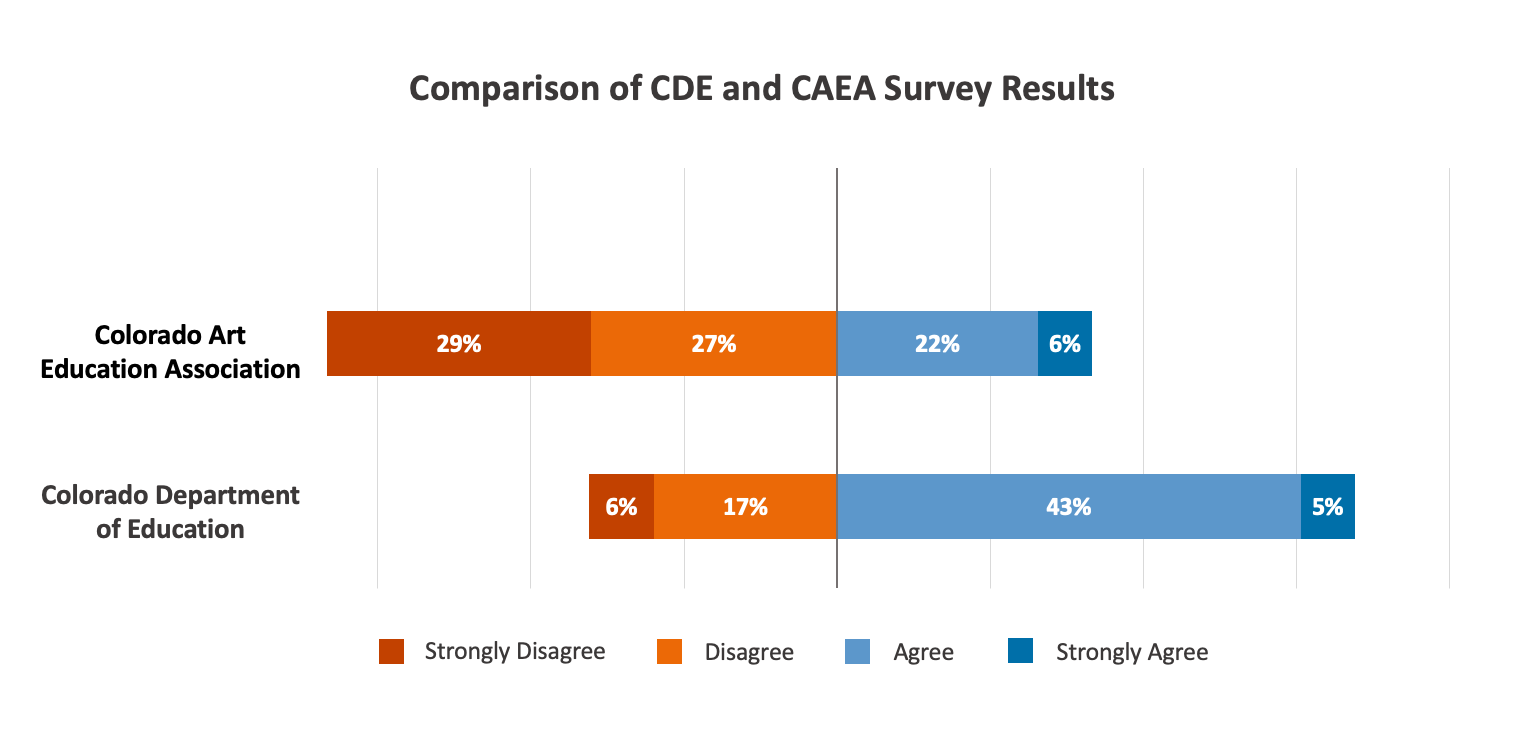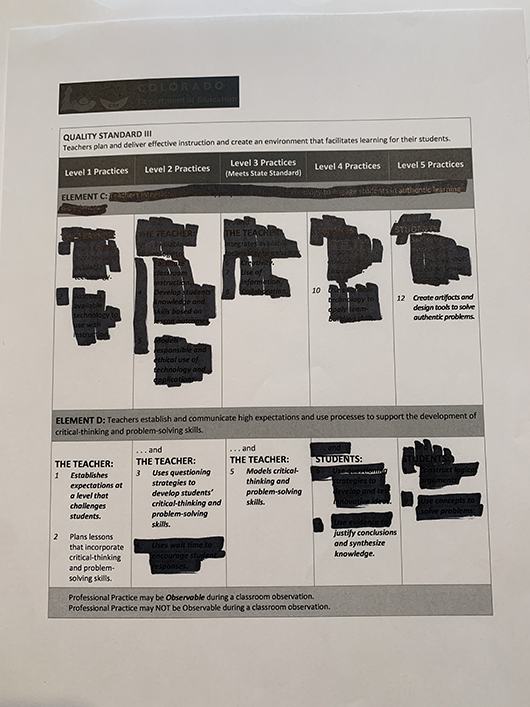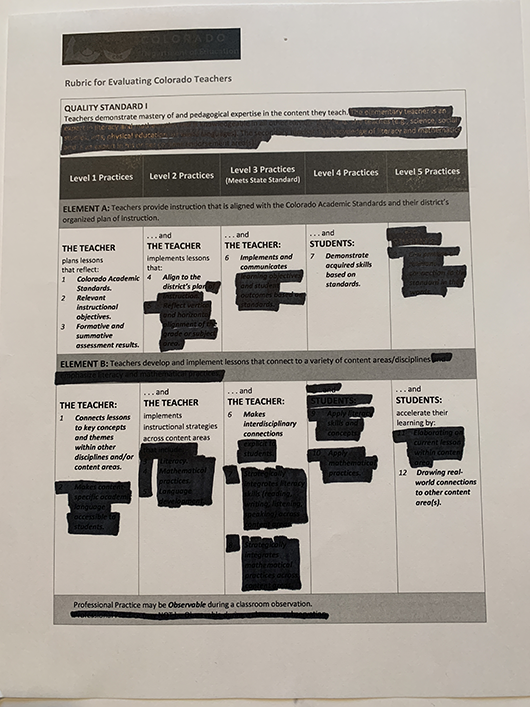Are Teacher Evaluations Designed for Arts Educators?

How can a collaborative artwork using teacher evaluation surveys be used to address gaps in research? Over the past few years, I have been exploring the use of arts-based research methods to examine the effects of the teacher evaluation model on Colorado arts educators. My research questions for this research project are:
- To what extent do art teachers perceive the Colorado teacher evaluation model as inclusive of arts education?
- To what extent does the use of critical arts-based research methods affect teachers’ perceptions of their evaluation model as inclusive of arts education?
Colorado’s endorsed teacher evaluation model, developed in response to Senate Bill 191, has neglected the perspective of arts education by focusing primarily on literacy and mathematic content. Consequently, this approach has devalued the importance of arts education, compelling arts educators to adapt their instructional content to align with these other content areas (Elpus, 2011; Gates et al., 2015). Drawing on my experience as a former visual arts teacher for over 10 years, I have witnessed the negative impact of these models on arts teachers, leading to a decline in the retention of effective arts educators.
This study is framed from a arts-based research and activist lens inspired by various artists, including Jenny Holzer. Colorado arts educators serve as the research participants as co-researchers through a social justice approach. The research is conducted in collaboration with the Colorado Art Education Association (CAEA). The integration of the study’s critical, arts-based research method and design presents an important contribution to the research field as an innovative methodological approach that leverages the strength of artistic and activist research methods.
The first phase of the research involves repurposing a 2014 Colorado Department of Education’s (CDE) teacher survey. The survey is used to examine Colorado teacher perspectives of the newly endorsed evaluation model. I updated the survey by adding the word ‘art’ to the questions. For instance, the arts education language in italics: “The teacher evaluation model used to evaluate me as an art teacher: Is based on current arts education research”. After adapting the survey, it was redistributed and filled out by Colorado Art Education Association (CAEA) members.
Comparing the data from CDE’s 2014 responses and the adapted CAEA survey reveals statistically significant differences, with an overall 23% gap in responses. Notably, 56% of CAEA members express negativity compared to CDE’s reported 23% regarding the Colorado teacher evaluation model. Conversely, CDE reported 49% positivity while only 28% of CAEA members reported positivity about the Colorado teacher evaluation model. This data suggests the need to reconsider the CDE’s survey and separate the data by content area, a step neglected in their 2014 survey report.

In the second phase of the study, CAEA members were tasked with using an arts-based research method to critique the CDE’s teacher evaluation model. Members were asked to redact anything on the evaluation model rubric that does not include arts education. The resulting artwork is displayed on this online gallery. The visual evidence observed in these images strongly indicated that the existing evaluation models are ineffective for Colorado arts teachers. The public and education community, like you, are invited to participate in this study by responding to these research data artworks produced through this arts-based research method. You can share your voice by responding to this survey.
Recognizing the vital role of the arts in education, the current teacher evaluation model in Colorado lacks acknowledgment of this significance. This research emphasizes a need for arts educators and arts community members to contribute their perspectives, playing a crucial role in reshaping the teacher evaluation model to include the arts. Your voice is instrumental in advocating for an inclusive evaluation model, evaluation, ensuring the retention of high-quality arts educators not only for Colorado but for the broader educational landscape in the future.
Gates, K., Hansen, D., and Tuttle, L. “Teacher Evaluation in the Arts Disciplines: Three State Perspectives.” Arts Education Policy Review 116.4 (2015): 162-75.
Elpus, K. (2011). Merit pay and the music teacher. Arts Education Policy Review 112(4), 180-90.





